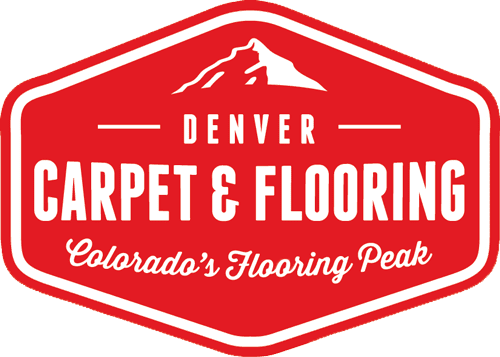The air inside your home plays a huge role in your family’s comfort and health. What most people don’t know is that flooring makes a bigger difference than you think. Certain materials can trap dust, release gases or even encourage mold growth, while others help promote a cleaner, healthier space.
At Denver Carpet & Flooring, we believe beautiful flooring shouldn’t come at the expense of your family’s well-being. That’s why we help homeowners choose products that are durable, stylish and safe for the air you breathe. Let’s learn how different flooring types affect indoor air quality so you can make healthier choices for your home!
What Impacts Indoor Air Quality
Indoor air quality determines how clean and safe the air in your home is. Poor air quality can cause headaches, allergies or respiratory irritation, especially for families with children, pets or those with asthma. Flooring contributes to air quality in the following ways:
- VOCs (volatile organic compounds): Often found in adhesives, finishes and synthetic materials, VOCs can release gases and lower air quality.
- Dust and allergens: Porous materials, carpet or uneven seams can trap pet dander, dust and pollen.
- Moisture and mold: If flooring is improperly installed or not moisture-resistant, humidity can cause mold growth beneath the surface.
What’s the good news? Many modern flooring products are designed to reduce such issues. Eco-friendly flooring options, low-VOC materials and improved manufacturing standards are improving the industry in the best way possible!
How Different Flooring Types Affect Air Quality
Every flooring type can affect your air quality in its own way. As a reliable flooring vendor in Denver, we can say that the right one comes down to your household needs, cleaning habits and preferences. Understanding each material will help you make a choice that makes sense for your style and health goals.
Hardwood Flooring
Hardwood flooring is one of the cleanest, healthiest flooring choices you can make. Because it’s a natural material, it doesn’t trap allergens or dust and all you need to do is sweep and vacuum without a hard brush head to prevent scratching. It’s also hypoallergenic so it works well in homes where people have allergies.
Unfortunately, some adhesives from finishes or adhesives can release VOCs. Consider prefinished hardwood or low-VOC stains to avoid this problem and to keep the air inside your home fresh and clean.
Carpet
Modern carpet has come a long way with regard to safety and sustainability. Many modern carpets are made with low-VOC fibers and adhesives, which are safer for indoor air quality than older products. Carpet also keeps the heat in and reduces noise, which is perfect for bedrooms and family spaces.
However, carpet does trap allergens like pet dander, pollen and dust if it isn’t cleaned regularly. The solution is simple: frequent vacuuming with a HEPA filter and occasional professional cleanings. Look for GREENGUARD-certified or low-VOC carpet lines to keep your home’s air fresh.
Luxury Vinyl Plank (LVP)
Luxury vinyl plank (LVP) is a practical flooring option for busy homes. Waterproof, easy to clean and mold-resistant, what’s not to love? These floors help reduce allergens and moisture-related issues.
Look out for FloorScore-certified LVP to minimize VOC emissions. Lower-quality vinyl can release chemicals, but certified products are tested to meet strict air quality standards. Because of this, LVP is ideal for moisture-prone areas like kitchens, bathrooms and basements.
Tile Flooring
Tile is one of the most hypoallergenic materials on the market. Both porcelain and ceramic tiles are non-emitting, which means they don’t release VOCs or other airborne contaminants. They also naturally resist mold, mildews and allergens.
However, you do need to maintain your grout. If the grout isn’t properly sealed, it can trap dust and dirt over time. Proper sealing and wiping the surfaces regularly will keep your air clean and your floors looking brand new.
Laminate Flooring
Laminate flooring offers the look of hardwood without the hefty price tag. It’s also made with materials that support better indoor air quality. Many laminates use recycled wood fibers and low-VOC adhesives, keeping emissions to a minimum while maintaining durability.
Check for CARB Phase 2 compliance or GREENGUARD certification to make a safe choice for your home. These designations confirm your flooring meets strict standards for formaldehyde and VOC emissions so your household can breathe easier.
Why Low-VOC Flooring is Important
VOCs, also known as volatile organic compounds, are chemicals that evaporate into the air. They often stem from certain flooring materials, adhesives or finishes. Long-term exposure to VOCs can result in irritation, fatigue or, in more severe cases, respiratory issues.
Low-VOC flooring options reduce such emissions, improving air quality and creating a healthier home. Certifications like GREENGUARD, FloorScore and CARB Phase 2 ensure flooring products meet strict chemical-emission standards. Choosing certified materials protects your health and the environment.
How to Improve Air Quality with the Right Flooring
Creating a healthy home begins with smart flooring choices. Choose low-VOC or hypoallergenic materials and find certified professionals to install them to prevent moisture problems.
At Denver Carpet & Flooring, our certified flooring installers in Denver use proper adhesives and techniques that improve both performance and air quality. After installation, regular maintenance like vacuuming with a HEPA filter and using eco-friendly cleaning products keeps your floors and air in top shape.
Humid spaces like bathrooms or basements need waterproof materials like LVP or tile. This helps reduce the risk of mold and mildew.
Breathe Easier with New Floors
Your flooring goes beyond how your home looks. It also affects how you breathe. At Denver Carpet & Flooring, we stock low-VOC, hypoallergenic materials. Our goal is to help you create a space that’s healthier and comfortable for everyone.
Ready to breathe easier? Contact us to book a shop-at-home consultation!




